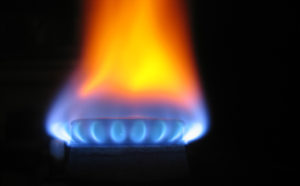 Natural gas rose for a fourth day on Friday after data by the EIA showed on Thursday a much larger than average inventory decline last week, further expanding deficits.
Natural gas rose for a fourth day on Friday after data by the EIA showed on Thursday a much larger than average inventory decline last week, further expanding deficits.
Natural gas for delivery in April traded 0.49% higher at $2.855 per million British thermal units at 10:10 GMT, shifting in a daily range of $2.863-$2.822. The contract jumped 2.6% yesterday to $2.841, having earlier risen to a one-week high of $2.864.
The Energy Information Administrations weekly natural gas storage report showed yesterday that US stockpiles fell by 228 billion cubic feet in the seven days through February 27th, in line with analysts’ expectations for a decline in the range of 222-235 bcf. This compared to the five-year average withdrawal of 115 bcf and the year-ago drop of 144 bcf.
Total gas held in US storage hubs amounted to 1.710 trillion cubic feet last week, expanding a deficit to the five-year average inventory level of 1.853 trillion to 7.7%, or -143 bcf, from 1.5% a week earlier. Stockpiles stood at 1.218 trillion cubic feet during the comparable period a year ago, 40.4% below current levels.
Warmer weather
However, upside movement is expected to remain limited as weather forecasting agencies predict a widespread thaw in the US to begin this weekend, fanning longer-term bearish sentiment.
According to NatGasWeather.com, natural gas demand in the US will be high compared to normal for one last day today before dropping to moderate through March 12th, with a neutral weather trend for the following seven days.
The last in a series of frigid Arctic outbreaks will gradually wane in the coming few days, marking the beginning of a widespread warming across most of the US. Readings across the North will remain very cold today, 20-35 degrees below normal, inducing very strong heating demand for one last day. The weekend will also present cooler-than-normal temperatures, although much closer to the average.
The western and central US will enjoy dry and mild conditions this weekend as high pressure builds up and expands over the Great Lakes and Northeast early next week, pushing highs near and slightly higher than average at 40-50 degrees Fahrenheit. The South will see temperatures warm back up to the seasonal upper 60s and 70s after a brief period of cooling, NatGasWeather.com said.
Late next week, weather systems tracking across southern Canada will hit the Great Lakes and North East with brief cool blasts, carrying rain, snow and lower readings, and will require close observation in case they push deeper southward. The countrys western regions will enjoy warm and dry weather through the third week of March, with a few brief periods of cooling, while the central US remains warmer than usual. The South and East will be mild as readings hover near normal or slightly cooler due to periods of showers.
Next Thursdays EIA inventory report will show another withdrawal well above the average as this weeks Arctic outbreak is factored in, bringing deficits to around -200 bcf. The five-year average inventory decline for the week ending March 6th is 116 billion cubic feet, while stockpiles fell by 189 bcf a year ago.
Next weeks thaw will end the recent string of hefty inventory declines, causing a much thinner withdrawal for the March 19th report. That decline will likely still be above the average as colder conditions across the North induce enough heating demand, while average withdrawals drop steeply as the winter draws to an end. The five-year average withdrawal for the week ending March 13th is 45 bcf, while stockpiles slid by 69 bcf a year ago.
Readings
According to AccuWeather.com, readings in New York will range between 33 and 36 degrees tomorrow, compared to the average 33-47, before warming up to 34-43 degrees two days later and peaking at 50 degrees on March 11th. Chicago will be colder than usual for one last day today as temperatures max out at 28 degrees, 15 below usual, before jumping to 48 degrees on March 10th.
Down South, Texas City will experience cooler-than-normal weather through March 11th, with highs set to range between 58 and 64, compared to the average 69, before jumping to 70 degrees on March 12th and 73-80 degrees between March 15-21st. On the West Coast, the high in Los Angeles tomorrow will be 83 degrees Fahrenheit, 13 higher than usual, with readings set to peak in the upper 70s and lower 80s through the middle of the month.
Pivot points
According to Binary Tribune’s daily analysis, April natural gas futures’ central pivot point stands at $2.816. In case the contract penetrates the first resistance level at $2.889 per million British thermal units, it will encounter next resistance $2.937. If breached, upside movement may attempt to advance to $3.010 per mBtu.
If the energy source drops below the S1 level at $2.768 per mBtu, it will next see support at $2.695. If the second key support zone is breached, the power-station fuel’s downward movement may extend to $2.647 per mBtu.





